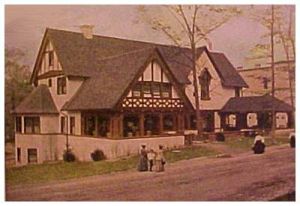Wisconsin: Difference between revisions
(Created page with "{{short description|Wisconsin State Building}} {{Infobox prepared food | name = Wisconsin State Building | image = Wisconsin State Building.jpg | image_size = 300px | caption = Wisconsin State Building | alternate_name = | country = | creator = | course = | cost = $14,750 ({{Inflation|US|14,750|1904|fmt=eq}}) | admission = | profit = | owner = | main_ingredi...") |
No edit summary |
||
| Line 15: | Line 15: | ||
| main_ingredient = | | main_ingredient = | ||
| variations = | | variations = | ||
| calories = | | calories = | ||
| other = | | other = | ||
}} | }} | ||
Revision as of 22:12, 9 November 2022
 Wisconsin State Building | |
| Construction Cost | $14,750 (equivalent to $444,849 in 2021) |
|---|---|
Wisconsin's state building was a departure from the ordinary semi-classic style of architecture prevalent in 1904 exposition buildings, as it was conceived with an English domestic style. The two-story structure, with its plastered walls and red gable roofs, amid the green foliage, provided a charming effect, in contrast to the more stately architecture. It was 90 by 50 feet and was dedicated on May 29.
Etymology
Before the Fair
Description
Inside, grand staircase were finished in Flemish oak, and the furniture was the "mission style," which harmonized with the woodwork. Indian blankets in rich dull reds and blues hung from the railing of the wall, which emphasized the "mission" effect.
In the Palace of Educational, exhibits covered branches of school work from the Kindergarten to the State University. Extensive displays of ores, polished granites and pottery clays were in the Palace of Mines. Their Forestry display included a great variety of polished woods. Wisconsin made its best record in the display in the Agricultural Palace, which was made up of agricultural products of the state and of butter and cheese exhibits.
